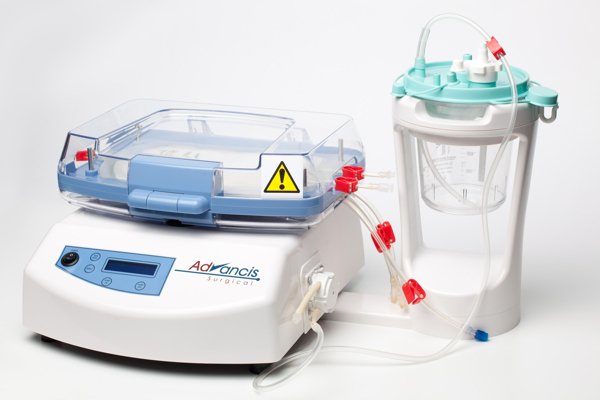New Blood Recycling Machine Contains 3D Printed Parts

The Hemosep benefited from a speedy development cycle thanks to AM. Courtesy of Stratasys.
Latest News
April 15, 2014
Behind the explosion in interest in additive manufacturing (AM) are a few simple facts that make the technology so appealing. Parts built through AM waste less material, are often quicker to produce, and can be much more complex than parts built using traditional manufacturing methods. These facts have led companies in every field, around the world to embrace 3D printing and experiment with new applications.
One of those new applications is a new blood recycling machine developed by Brightwake. Based in Nottinghamshire, UK, Brightwake is a “… creative development, engineering, production and research company specializing in the development of innovative solutions for all kinds of manufacturing, operational and logistical problems.” In this case, the creative development is called Hemosep and it was built in part using a Stratasys Dimension 1200es.

The Hemosep recovers blood lost during major operations and concentrates the blood cells prior to transfusion back to the patient in a process known as autotransfusion. The prototype machine (which has won a patent) uses a number of 3D printed parts, including the main filtration and cooling systems.
“The Hemosep consists of a bag that uses chemical sponge technology and a mechanical agitator to concentrate blood sucked from a surgical site or drained from a heart-lung machine after surgery,” said Steve Cotton, Brightwake’s director of research and development. “The cells are then returned to the patient via blood transfusion. In a climate of blood shortage, this recycling methodology has the potential to be a game-changer within the medical industry, saving the National Health Service millions.”
The new machine underwent successful trials in Turkey where it assisted in over 100 open-heart surgeries. One of the first patients to reap the benefits of the Hemosep in the UK was a female heart patient who, because of her religious beliefs, asked not to receive any donated blood. The Hemosep was able to return enough of the patient’s blood to maintain both her life and her religious ideals.
Use of AM to develop the new machine offered significant cost and time savings.
“Previously we had to outsource the production of these parts which took around three weeks per part,” said Cotton. “Now we’re 3D printing superior strength parts overnight, cutting our prototyping costs by 96% and saving more than £1,000 for each 3D printed model. 3D printing has not only enabled us to cut our own costs, it has also been crucial in actually getting a functional device to clinical trials. The ability to 3D print parts that look, feel and perform like the final product, on-the-fly, is the future of medical device manufacturing.”
Below you’ll find a video about the Hemosep.
Source: Stratasys
Subscribe to our FREE magazine, FREE email newsletters or both!
Latest News
About the Author
John NewmanJohn Newman is a Digital Engineering contributor who focuses on 3D printing. Contact him via [email protected] and read his posts on Rapid Ready Technology.
Follow DE





